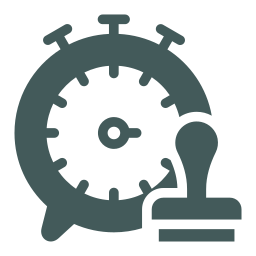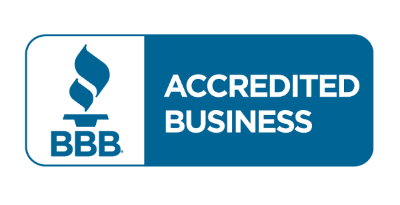
How Do You Treat a Muscle or Joint Injury?
Education Exercise
Your body has more than 600 muscles in it. It also contains more than 300 joints. As a result, there is a good chance you'll suffer both muscle and joint injuries at different points throughout your life.

How Do You Treat a Muscle or Joint Injury?
Education Exercise
Your body has more than 600 muscles in it. It also contains more than 300 joints. As a result, there is a good chance you'll suffer both muscle and joint injuries at different points throughout your life.
It is important to recognize the signs and symptoms of these injuries. If you don't spot a muscle or joint capsule injury, it could worsen and have serious consequences. That's why you should look out for the signs and symptoms of these types of injuries and consider getting an official diagnosis from your healthcare provider.
Once you receive diagnoses for muscle and joint injuries, you can begin following the proper injury treatment protocol. Treating an injury will allow you to nurse an injured muscle or joint back to full strength. It may also help lessen the aches and pains accompanying these injuries.
Learn more about spotting, diagnosing, and treating a muscle or joint capsule injury below.
Spotting Signs and Symptoms of Muscle and Joint Injuries
It probably won't be easy to tell if you have a minor muscle or joint injury. You'll experience muscle or joint pain when you sustain muscle or joint injuries.But there will also be other signs and symptoms suggesting you must begin treating an injury. You should watch for them if you ever feel muscle or joint pain.
Here are some of the most common signs and symptoms of muscle injuries:
- Muscle weakness
- Redness or bruising
- Muscle spasms
- Reduced range of motion
- Tenderness
Here are some of the most common signs and symptoms of joint injuries:
- Swelling
- Stiffness
- Limited range of motion
- Warmth
- Unusual clicking noises
You shouldn't ignore any of these signs and symptoms if you suspect you might have a muscle or joint capsule injury. This could worsen a bad situation and leave you looking for a much longer recovery time.
Diagnosing Muscle and Joint Injuries
When you suffer a muscle or joint capsule injury, you might be under the impression that you'll always be able to diagnose it yourself. For example, you may believe you have a pulled hamstring muscle after feeling this muscle pull during a race. Or you may believe you have an ankle sprain after rolling it while playing pickup basketball.
But the problem with this approach to diagnosing muscle and joint injuries is that you might need help to diagnose their severity. Your injury could be not as bad as you initially thought or worse than you suspected.
You should consider seeing a healthcare provider when nursing a muscle or joint capsule injury. They'll be able to evaluate your injury and provide you with an official diagnosis in most cases. They also recommend you have an X-ray or an MRI performed to rule out more serious muscle and joint injuries.
Treating a Muscle or Joint Capsule Injury
After you receive an official diagnosis for a muscle or joint injury, you and your doctor will be able to come up with a plan for treating an injury. There will be a variety of ways in which you can get the injury treatment you need.
If your muscle or joint injury isn't too bad, you might be able to benefit from using the RICE method to your advantage. The RICE method will involve you taking the following steps:
- Resting the part of your body that is injured
- Icing your muscle or joint injury
- Compressing the portion of your body that is in recovery
- Elevating the muscle or joint that you hurt
By taking these steps, you should be able to reduce much of the pain you're experiencing. You should also be able to get the blood flowing through the part of your body that sustained a muscle or joint injury. It'll make treating an injury easier and hopefully help you heal quicker than you would otherwise.
In many instances, the RICE method works wonders for muscle and joint injuries. But if they don't do the trick, you might need to try other things for injury treatment. This may include:
- Taking over-the-counter medications and/or prescription drugs to treat pain
- Putting physical therapy to the test to see if it helps you regain strength in an injured muscle or joint
- Undergoing surgery to repair a muscle or joint capsule injury
Ideally, you should try to do everything you can to avoid surgery. But there will be times when it might be your best injury treatment option.
Preventing Muscle and Joint Injuries
Because you have so many muscles and joints, avoiding all muscle and joint injuries will be almost impossible. But you can do your best to prevent these types of injuries.
Here are some of the things you can try to prevent muscle and joint injuries from occurring:
- Make sure you warm up before taking part in any physical activities and stretch your muscles and joints thoroughly
- Use the proper techniques any time you're participating in sports or other physical activities
- Try not to do the same types of physical activities day in and day out
- Do strength-training exercises to make your muscles stronger and provide protection for your joints
- Cool down at the end of all your physical activities
Make Taking Good Care of Your Muscles and Joints a Top Priority
When you're still on the younger side, you can quickly bounce back from a muscle or joint capsule injury. But as you get older, it can become more difficult to do this.
With this in mind, you should do what you can to prevent muscle and joint injuries. You should also strive to spot the signs and symptoms of muscle and common injuries and work to get them diagnosed if you ever sustain them. It'll help you start treating an injury so that you can get back to full strength fast.
Read more informative articles on treating injuries on the rest of our blog.

Jay Todtenbier is an original founder of SupplementRelief.com in 2010 and has operated the business ever since. He is also a tennis instructor and gospel musician. Formerly he spent 25 years in business development, technology and marketing with startups and major corporations having gone through the tech boom in Silicon Valley in the 90s. He became passionate about, and began studying and practicing Wellness as a Lifestyle after experiencing chronic, personal health challenges including depression, auto-immune disorders, and being overweight that impacted his ability to live a healthy, vibrant life. Since then, he has been an advocate for healthier living encouraging others to live better through making small, gradual changes to lifestyle behaviors relating to whole-foods nutrition, stress management, reasonable exercise, proper sleep, and the use of targeted, high-quality supplements.
Learn more about Jay Todtenbier.
-
 Discussion Forum
Questions or Feedback?
Discussion Forum
Questions or Feedback?Ask questions. Share your thoughts. Note that we cannot answer questions relating to specific medical conditions - please refer those to your qualified healthcare provider.
Post a new Comment or Reply to an existing one. Help for using the Discussion Forum.
 Discussion Forum Help
Discussion Forum Help
Comments are displayed in order of the last one posted so the most recent one is at the top and the oldest one at the bottom.
Replies within a Comment are displayed in reverse order with the oldest one at the top and the most recent one at the bottom.
Each post identifies
 who made the post and the
who made the post and the  date and time the post was made.
date and time the post was made.Mouse over the icons for tooltips that explain what they mean.

If you see this icon you can attach an Audio file to your post.

If you see this icon you can attach a Document file to your post.

If you see this icon you can attach an Image file to your post.

If you see this icon you can attach a Video file to your post.
You will see the
 Ban icon (Report Post as SPAM) immediately following the Timestamp of the post. Click this icon if you feel strongly that the content posted is not appropriate and should be reviewed by the Forum Moderator. You will be provided with a confirmation dialog to be sure you wish to submit this post for review. If submitted, the Forum Moderator will be notified to review the post and will determine what type of action to take.
Ban icon (Report Post as SPAM) immediately following the Timestamp of the post. Click this icon if you feel strongly that the content posted is not appropriate and should be reviewed by the Forum Moderator. You will be provided with a confirmation dialog to be sure you wish to submit this post for review. If submitted, the Forum Moderator will be notified to review the post and will determine what type of action to take.Click
 in the upper right corner of this Help modal or anywhere on the web page outside of the modal to exit Help.
in the upper right corner of this Help modal or anywhere on the web page outside of the modal to exit Help.
![]() Session Expired from Inactivity
Session Expired from Inactivity
Do you want to?
9618 Jefferson Highway, Suite D-191
Baton Rouge LA 70809-9636
(888) 424-0032 |
support@supplementrelief.com
* Disclaimer: This page is available exclusively for SupplementRelief.com clients. None of the information on this website is intended to replace your relationship with your healthcare provider(s). Nothing should be considered medical advice. The information, knowledge, and experience shared on this website are the opinions of SupplementRelief.com. This site and its content are intended to enhance your knowledge base as YOU MAKE YOUR OWN HEALTHCARE DECISIONS in partnership with your qualified health professional.
* These statements have not been evaluated by the Food and Drug Administration. These products and services are not intended to diagnose, treat, cure, or prevent disease.
* There is NO GUARANTEE OF SPECIFIC RESULTS for the products or services offered, and the RESULTS CAN VARY for each individual. Any results claimed by our customers are based on individual experiences that are unique and cannot be guaranteed.
FirstFitness Nutrition and NuMedica may be promoted and sold on the internet ONLY by Authorized Resellers who have been approved by and have registered their website domain with these companies. They strictly prohibit, and actively monitor, the UNAUTHORIZED SALE or RESALE of their products in ALL online public shopping portals including Amazon, eBay, and others and into other countries. All products purchased in SupplementRelief.com are for PERSONAL USE ONLY and CANNOT BE RESOLD to others. Please report violations of Reseller Policy directly to FirstFitness Nutrition at 800.621.4348 and to NuMedica at 800.869.8100.
The content and photographs on this website are copyrighted or Licensed Material and may not be downloaded for other than personal use. Republication, retransmission, reproduction, or any other use of the content or photographs is prohibited. ©2010-2024 SupplementRelief.com.
Are you sure you want to remove this item?

